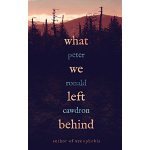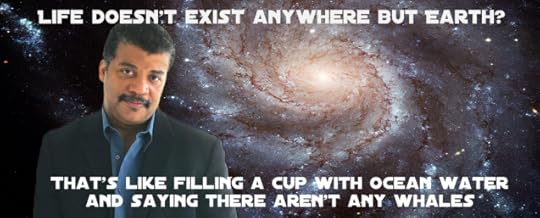Peter Cawdron's Blog, page 11
August 24, 2015
Vampires and Space Porn
Okay, I admit it. I’m guilty of click-bait, but this really is a post about vampires and space porn.
Over the last couple of months, I’ve been working on a couple of novellas, Alien Space Tentacle Porn and Vampires, although it’s important to note that these two stories are completely unrelated.
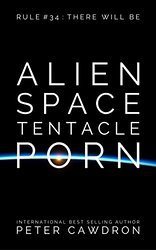 Anyone that’s read any of my novels has probably already figured out that I like to take risks with my writing. Rather than a nice, safe, easy bet on the hero’s journey adapted to stars, or wars, or whatever, I like to get outside my comfort zone.
Anyone that’s read any of my novels has probably already figured out that I like to take risks with my writing. Rather than a nice, safe, easy bet on the hero’s journey adapted to stars, or wars, or whatever, I like to get outside my comfort zone.
When mulling over stories I’d like to write, I gravitate toward challenging plot lines rather than run-of-the-mill well-worn concepts. Unfortunately, this means my stories aren’t exactly commercially astute and don’t tend to soar high in the Amazon rankings. I know I’d be better served pumping out some pulp fiction, but I just can’t bring myself to write cliché stories when there’s so much more to explore.
Don’t judge a book by its cover
Or in this case, by it’s title. Books like My Sweet Satan have gone on to succeed on Amazon in spite of their lousy titles.
Alien Space Tentacle Porn is a fascinating look at how off-the-wall First Contact could be—in a Men-In-Black kind of way. It’s crazy fun.
Despite it’s provocative title, Alien Space Tentacle Porn is actually quite demur. There’s the literary equivalent of a flash of flesh in a prison cell, but nothing sleazy or graphic. Instead, the novella has some thought-provoking ideas on what it takes for society to advance, all woven against an alien encounter of delusional and often hilarious proportions.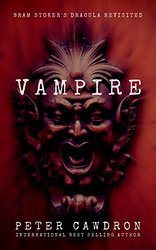
Vampire, on the other hand, is sober, being a classic suspense/horror story. This novella revisits Bram Stoker’s Dracula, but without becoming bogged down in the sensational aspects of sucking blood from neck wounds.
Instead of following the standard clichés, Vampire exploits plot points from Stoker’s original work, weaving an all-too-plausible look at how the vampire legend could have arisen, and how it could perpetuate in modern times without being noticed.
In writing Vampire, I wanted to return to the uncertainty and creepy atmosphere that haunts Dracula as a novel, and revive some of the foreboding sense of evil so masterfully portrayed by Bram Stoker.
This is very much a tribute work, and I hope it comes across as such. Although it’s a novella, coming in at 16,000 words, it packs quite a punch, with an ending few will see coming.
Thanks again for supporting independent science fiction. I hope you take a chance on these works as they’re both memorable stories that are thoroughly enjoyable.


August 15, 2015
Real world Encounters with other stars
Today, science fiction author Matthew Mather launches his latest book, NOMAD.
All too often, we see life on Earth as distinct and separate from outer space, but the reality is, we are in space, not separate from it. As Carl Sagan noted when Voyager turned around and took a snap shot of Earth at a distance of 6 billion kilometers, out beyond Pluto, our world is little more than a pale blue dot, a speck of dust floating on a sunbeam. What would it take to upset life on Earth? The dinosaurs found that out the hard way, and Matthew explores some other possibilities that are all too plausible.
In this article, Matthew discusses the background behind his novel, which is a page-turner and based on hard science. NOMAD is on special today for 99c, so grab it while it’s hot.
~~~
Before writing my newest book Nomad, released on August 12th, I spent months talking to astronomers and astrophysicists to build up the science behind the encounter I envisioned. At first, the physicists said the event would totally destroy the Earth, but slowly, I managed to piece together a physics-based scenario where it was possible life could survive on the surface—otherwise it wouldn’t make for much of a story!
I won’t give away a spoiler and say exactly what the anomaly is in Nomad, except to say that it’s on the order of a hundred times the mass of the sun, totally invisible, and coming at us quickly. It’s based on real-world science, and I spent a lot of time working with the astrophysicists to work out a scenario of how we would miss detecting this kind of anomaly.
In the end, I managed to convince a team of post-graduate researchers build a full three-dimensional gravity simulation of the entire solar system to lob my Nomad anomaly through the middle of. All of the elements of the story—all the forces involved and the paths of the planets afterward—are based on real-world physics (at the end of the book, I have instructions on where to watch a video of me running the simulation).
There have been many books and movies illustrating the idea that the Earth is part of the ecosystem of asteroids and comets, planets and even our Sun, and that from time to time, an object may hit the Earth, or the Sun may flare, triggering catastrophic events. But what hasn’t been explored as much is the effect of an ecosystem on a much larger scale—the effect exerted on the Earth by objects in our interstellar and even intergalactic neighborhood.
It might sound far-fetched, but it isn’t.
In fact, much of the events we’d attributed previously to chance, like the asteroid impact that wiped out the dinosaurs, might not be random at all, but the direct result of the interstellar interactions the Earth has with passing stars (still random, but on a much larger scale). In school, we’re taught that the closest star, apart from the Sun, is Proxima Centuri, at just over four light years of distance. It may seem like the interstellar neighborhood is static.
But it’s not.
In February of 2015, researchers were dumbfounded to discover that just 70,000 years ago, near enough in time that our direct ancestors would have seen it, Scholz’s star, a red dwarf, passed about a half light year from us. This led to a flurry of data crunching, leading scientists to discover that, for instance, four million years ago, a giant star, more than twice the mass of the sun, passed less than a third of a light year from us, and in just over a million years from now, another star will pass at just over a hundredth (yes, a hundredth) of a light year from our sun, grazing the solar system itself and possibly affecting the orbits of the planets.
Now scientists are saying that Sedna, the 10th planetoid of the Sun, the one after Pluto, isn’t even an original planet of our Sun. It was captured from a passing star over a billion years ago, when our solar system collided with an alien star’s planetary system. Hundreds of objects in the Kuiper Belt, the collection of planetoids past Uranus, are believed to have been captured from passing stars.
So we are continually mixing together with others stars and interstellar objects, and not on a time scale of billions of years, but on a regular basis every few million years—some scientists now even think that alien stars transit our solar system’s Oort cloud as often as every few hundred thousand years ( BBC )
A change in Earth’s orbit might have triggered one of the biggest global warming events in its history ( Daily Mail ). And scientists now think that a massive ice age, started 35 million years ago, might have been also been caused by another shift in Earth’s orbit, and that this same event disturbed the asteroid belt enough to precipitate several large asteroid impacts, one of which formed the Chesapeake Bay. Some now believe these sorts of events might have been caused by the gravitational effect of a passing star.
Asteroids and comets transiting the inner solar system will of course hit the Earth from time to time, but there is an added element of the influence of passing stars that churn these objects into new and dangerous orbits, and even pulling the Earth itself into a slightly different orbit around the Sun. Which leads to speculation about the root cause of some large comet/asteroid impacts, such as the one that wiped out the dinosaurs. The point is that there are a lot of things in our universe, happening right around us, that we have no idea about.
And we haven’t even talked about the 95% of “stuff” floating around us, dark matter, that we can’t see or detect, other than knowing it’s there from its gravitational signature. With upgraded sensors and increased power in the Large Hadron Collider (LHC) in 2015, the world’s most powerful particle accelerator, many scientists had hoped to see evidence of dark matter.
But they’ve found nothing. Despite all of our technology and hundreds of years of peering into the cosmos, we still have no idea what makes up the vast majority of our universe.
The scenario is Nomad is perhaps farfetched, but perhaps not—truth is often stranger than fiction—and this is the story of Nomad.
Click here to go to Nomad’s Amazon Page.


August 10, 2015
Chronicles Week! (with Kindle Paperwhite Giveaway!)
Author Will Swardstrom talks about his involvement in The Future Chronicles series of anthologies and has a Kindle Paperwhite giveaway with all the Chronicles preloaded. Jump in and join the party!
 Originally posted on Will Swardstrom - Author:
Originally posted on Will Swardstrom - Author:
Been radio silence around here for a couple months. Sorry about that…I’ll fill you in later. Suffice it to say this summer didn’t go exactly as planned on the writing front, but was still productive as well.
(Yes, yes…I’ll get to the Kindle Paperwhite giveaway in a bit…)
But while I haven’t been updating Ye Olde Blog at all this summer, I’m breaking that fast now for Chronicles Week.
Let me back up a bit. When I started writing, I credited a lot of the reasons why to one man — Hugh Howey. After reading his blog and WOOL, I was heartened by his approach and the success he had. Not success as in worldwide blockbuster multi-millionaire success, but rather just simply getting that book written and published success. I told anyone and everyone that it was due to Hugh Howey’s career that I had one as well.
While…
View original 791 more words


August 8, 2015
Review: ‘What We Left Behind’ by Peter Cawdron
Here’s a book review of What We Left Behind by Welsh blogger and university student Katherine, studying English Literature and History
 Originally posted on Katherine's Bookcase:
Originally posted on Katherine's Bookcase:
Genre: Thriller / Sci-fi / Dystopian / YA (Young Adult)
Length: 192 pages (approx.)
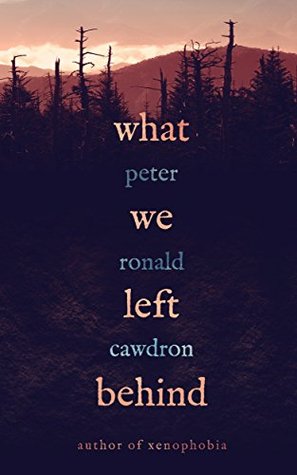 I have awarded this book 5 stars.
I have awarded this book 5 stars.
Synopsis: Hazel is a regular teenager growing up in an irregular world overrun with zombies. She likes music, perfume, freshly baked muffins, and playing her Xbox—everything that no longer exists in the apocalypse. Raised in the safety of a commune, Hazel rarely sees Zee anymore, except on those occasions when the soldiers demonstrate the importance of a headshot to the kids. To her horror, circumstances beyond her control lead her outside the barbed wire fence and into a zombie-infested town
Review: This was such a breath of fresh air from previous zombie apocalypse novels that I have read!
I will admit that when I began this book, I wasn’t sure if it was for me or not. There was nothing that stood out about the characters (except their age)…
View original 294 more words


July 12, 2015
Human intelligence is a peacock feather
In the 1950’s, physicist Enrico Fermi asked a seemingly innocuous question over lunch, “Where is everyone?” Those present immediately understood he wasn’t talking about anyone being missing from the dining room. Fermi was referring to aliens. Fermi wanted to know, why don’t we see evidence for intelligent extraterrestrial beings when we look out into space?
Why would there be intelligent life in outer space?
The universe is both astonishingly big and surprisingly transparent. We can look into the dark night sky and see light from 13.8 billion years in the past, showing us the emerging structure of the cosmos in remarkable detail. The sheer size and scale of the universe is beyond comprehension, with roughly two hundred billion galaxies in the visible universe, containing upwards of 10^29 stars, that’s 100,000,000,000,000,000,000,000,000,000 stars.
To think we are alone in the universe stretches the bounds of credulity, especially when we consider some of the complex molecules we’ve found forming naturally in deep space. The Sagittarius B molecular cloud, as an example, contains billions of gallons of alcohol in the form of C2H4O, and copious amounts of at least one of the amino acids coded by DNA, glycine—CH2NH2COOH, along with various simple sugars. It seems ET is boozy and has a sweet tooth.
Space is a chemical factory. There are over five hundred different types of amino acid. Life on Earth uses just twenty. To our surprise, we’ve found meteorites containing seventy-five different amino acids, although only ten of these are used in biology.
Laboratory tests simulating the environment of space, have shown that these acids can naturally link to form chains, marking the beginning of the complex chemistry that underpins life on Earth.

Sagittarius B molecular cloud. Picture credit: dailygalaxy
When you consider that the Sagittarius B molecular cloud contains enough material to form three million stars like the Sun, each with its own unique planetary system, you realize life may be far more common than we suspect. There are literally millions of opportunities for life to form.
So if the lego building blocks for life are abundant in space, and if life arises naturally elsewhere in the universe, where is everyone? This is precisely the question that perplexed Fermi.
Once an intelligent species ventures into space, it should naturally branch out to explore the galaxy in much the same way Europeans spread throughout Earth once they mastered sailing. Given the immense age of the universe, and given how relatively quickly we should be able to populate the galaxy once we get going, Fermi’s question is a paradox—Where is everyone? There should be dozens, hundreds, perhaps thousands of other intelligent space-faring alien species out there, but there’s only silence.
Common solutions to Fermi’s Paradox
There are at least fifty potential answers to Fermi’s Paradox but here are the top ten.
Hospitable planets like Earth are extremely rare and we are the first species to make it into space.
Aliens are everywhere, but we can’t detect them because their communication is point-to-point and highly efficient.
There’s a Great Filter, something that blocks progress to the stars so very few civilizations expand into space.
Interstellar travel is too costly and too time consuming to undertake. Although under this scenario, we should still be able to detect other space-faring species.
Earth is in a nature preserve, being deliberately isolated until we develop into a peaceful star-faring species. This is the Star Trek Prime Directive, although both isolating us and deliberately hiding all knowledge of other galactic civilizations seems unrealistically complex to be practical.
Aliens keep to themselves. Either they’re not interested in exploration or they’re weary of provoking other more hostile aliens to attack. After all, it’s not smart to shout in a jungle.
ET has transcended physical form and escaped mortality by living in virtual reality in a computer server farm on the edge of the galaxy.
Forget ET, we’re living in a virtual reality similar to the Matrix so space isn’t real.
We are ET. The movie Prometheus explores this possibility, but as life has evolved for at least 3.6 billion years on Earth, for this premise to hold, ET would have to be a very primitive microbe that encountered Earth billions of years ago.
Aliens are already among us but keeping their presence secret. Although this is a popular notion it’s highly unlikely.

Picture credit: Seti @ Home
Great Filter
The Great Filter addresses Fermi’s Paradox by suggesting life might be common throughout the universe, but it may have a torturous, hazardous path to the stars.
Looking at our own history, we can seen numerous gates/checkpoints life had to pass through before Homo sapiens arose.
For billions of years, life on Earth consisted of nothing more than microbes. It took an absurd amount of time for life to make the jump from single-celled organisms to multicellular plants and animals. What if that was a fluke?
There’s been dozens of mass extinction events that could have obliterated life on Earth, but somehow life survived. And if an asteroid hadn’t wiped out most of the dinosaurs roughly 65 million years ago, mammals may never have diversified into their current forms.
When considering the Great Filter, one question that arises is—which side of the filter are we on?
Even now, there’s no guarantee we’ll make it to the stars. Any number of possible doomsday scenarios may yet play out, from nuclear war to the rise of a terminator-like artificial intelligence, or an engineered disease. Any of these may drive us to extinction. We could still be filtered out of the celestial equation. Even such promising advances as nanotechnology could ultimately be our undoing.
If the Great Filter that has held back interstellar colonization for others was the leap from single to multicellular life, we’ve already made it, as we are well beyond that. If the Filter turns out to be our own warring, self-destructive nature, we may not make it to the stars. Stephen Hawking goes so far as to say, “Our only chance of long-term survival is not to remain inward-looking on planet Earth, but to spread out into space.”
Intelligence
Fermi’s Paradox has one critical, underlying assumption—intelligence will arise naturally elsewhere in the universe. But what if this assumption is wrong?
What does it take for intelligence to flourish?
Although life may thrive on thousands, perhaps millions of other planets throughout the universe, a closer look at the evolution of intelligence on Earth suggests the Great Filter may be more of a Great Brick Wall. Intelligence is not a default for evolution.
Natural selection is the winnowing process by which organisms have adapted to life on Earth. Too many seeds fall, too many puppies are born, and too many microbes divide for them all to survive in the long term.
E. Coli, as an example, doubles every 20 minutes. If it could E. Coli would cover the entire planet in a day and a half. By the end of two days, E. Coli would weigh considerably more than the entire planet, molten core and all. Clearly, that doesn’t happen, and the reason is E. Coli doesn’t have unlimited resources and cannot divide unchecked.
Charles Darwin’s astonishing insight in On the Origin of Species was that those bacterium, seeds or puppies that do survive, survive for a reason. If one out of a thousand seeds flourishes into a tree, the question is—why that particular seed? What allowed that seed to thrive? If it was blind luck, there’s no evolutionary advantage. But if it was because of a genetic trait, a trait that made the seed slightly lighter so it could float on the wind, or slightly thicker so it couldn’t be digested by an animal, then that trait will be passed on to the next generation, and so gradual change dominates evolution.
It’s tempting to think that intelligence is the result of natural selection, as our intelligence certainly gives us an advantage over other animals and has allowed us to dominate life on Earth, but that’s not entirely correct. Intelligence is not necessarily a survival trait.
There are varying degrees of intelligence in nature. Intelligence is found in species such as corvids and cephalopods, cetaceans and apes, but we don’t find any intelligence as advanced as our own. Why? This is an important question, as when we look at evolutionary traits that bestow advantages such as sight or flight, we see convergent evolution happening on a vast scale.
Convergent evolution describes how entirely different, seemingly unrelated species evolve similar traits, like dolphins and sharks both having dorsal fins even though sharks evolved 450 million years ago, while dolphins are mammals that returned to the sea a mere 50 million years ago.
Take sight as an example. Sight has evolved independently at least 40 different times. Being sensitive to light conveys such an overwhelming evolutionary advantage it spawned an arms race between predators and prey. As marvelous as our sight is, our vision is nothing compared to that of the Mantis shrimp that sees twelve primary colors compared to our three. The Mantis shrimp sees a broader spectrum of light than we do, and can also distinguish different types of polarized light, something we need sunglasses to detect.
The point is—sight provides such an immense evolutionary advantage, we see sight emerging throughout the animal kingdom, and in ways that dwarf our own vision. The same is true when it comes to flight, with birds, bats and insects all adopting different methods to take to the air. We don’t see this when it comes to advanced intelligence. And it’s not just that we don’t see whales as smart as us. We don’t see any other species in the Homo genus with our level of intelligence, and yet we’re sure they once existed. Think about how astonishing that is. We are the only remaining species on this branch of the evolutionary tree of life. Why?
There are twenty thousand different species of butterfly. There are three hundred and fifty thousand different species of beetles. There is only one Homo species. Us. Sapiens.
If intelligence provided an evolutionary advantage, why don’t we live in a world with Homo neanderthals and Homo erectus? It’s tempting to think of neanderthals as brute cavemen, but our own ancestors weren’t faring much better at the time.
Neanderthals were highly intelligent, with a level of ingenuity and cognitive awareness well beyond that of chimps or dolphins. They had complex social structures, caring for their sick, burying their dead, working with stone tools, painting on walls, making jewelry and even playing musical instruments. Although the evidence is scant, there’s reason to consider Neanderthals were ocean faring, having established colonies on such remote islands as Crete. We still don’t fully understand why it was Homo sapiens that eventually planted a flag on the Moon and not Homo neanderthals.
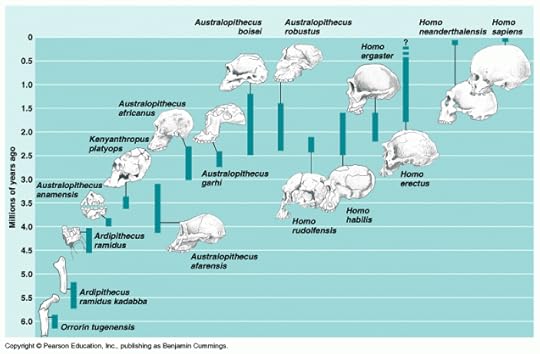
Evolution of the Homo genus. Picture credit: Nova
When we consider the evolution of human intelligence, we have to think beyond ourselves. We’re simply the latest rendition of Homo, a complex genus that branched from hominids to become Homo sapiens. Roughly 4-5 million years ago, we shared a common ancestor with chimpanzees, that is to say, from that point our ancestors gradually branched out into a number of species that eventually led either to extinction or to Homo sapiens. The physical traits we have are hominid/homo traits, they’re not unique to Homo sapiens. We inherited these traits from those that came before us, including our intelligence.
If intelligence isn’t a survival trait, then what is it? How did intelligence arise?
Following on from On the Origin of Species, Charles Darwin wrote The Descent of Man, describing another often overlooked aspect of evolution—sexual selection. Like natural selection, sexual selection describes a mechanism by which species adapt, but instead of survival traits allowing an animal to reproduce, sexually desirable or sexually dominant traits allow an animal to mate. In both cases, the end result is passing successful genes onto future generations.
Natural selection is blind and indifferent, whereas sexual selection is in the eye of the beholder.

Lophorina superba is the “superb bird of paradise.” Here a male dances before a female, enticing her to mate. Picture credit: Birds of Paradise
Natural selection refines traits necessary for survival. Sexual selection doesn’t. Sexual selection is extravagant and, on occasion, can be wasteful, perhaps even detrimental when maladaptations arise.
Deer have antlers developed as the result of sexual selection, being used for fights over mates, but these can cause an untimely death when caught up on bushes. The Irish Elk may have gone extinct due to a combination of factors, from human hunting to the inability of males to negotiate wooded areas, and even the excessive nutritional demands of its antlers on its diet.

Irish Elk may have gone extinct due to the excesses of sexual selection: Picture credit: Christies
In the same way, peacock feathers attract pea hens while placing a burden on flight when escaping predators. Over time, this dichotomy balances out or a species goes extinct.
For millions of years, the survival of the Homo genus relied on making stone tools and harnessing fire, skill in hunting and scavenging. This dependency caused intelligence to become a desirable trait, an indicator of biological fitness. Both men and women, when selecting mates, had a natural preference for someone with a level of intelligence capable of mastering these skills. This isn’t to say geeks are sexy, but that there was a minimum level of intelligence below which prospective partners would be seen as repulsive. Once established, a positive feedback loop led to a level of intelligence far in excess of that required by hunter-gathers, bringing us music, art, literature and science, and yet the evolution of Homo sapiens was by no means guaranteed.
Intelligence came at a price. Big brains are burdensome. Whereas giraffes can walk within minutes of being born, human children take years to mature to the point of being physically independent, placing a strain on the overall survival of the species. For the rest of the Homo genus, such a development may have compounded with other pressures and led to extinction. Like peacocks struggling to flee from predators, numerous species of the Homo genus arrived at an evolutionary dead-end, unable to juggle sexually selective pressures against natural selection. Somehow, we got lucky and the advent of agriculture allowed civilization to emerge.
If the level of intelligence required to reach the stars is a sexually selected trait and not the result of natural selection, we may well be alone in the universe. If sexual selection is a requisite for advanced intelligence then the good news is, we’ve already passed through the Great Filter, but we may very well be one of only a few species to emerge among the stars. After 3.8 billion years of evolutionary development, it seems advanced intelligence isn’t natural, it’s sexual. We may well find life on other planets, but the proportion of intelligent life might be exceedingly low given how specialized intelligence is in nature.
Human intelligence is a peacock feather, an extravagant excess developed due to sexual preferences, and this may well explain why we don’t see intelligent life elsewhere in the universe as the level of intelligence required to build a rocket ship is far rarer than we ever imagined.

Peacocks are examples of sexual selection in extreme. Picture credit: 281 Photography
I’m an optimist. With all the focus NASA has on imaging distant planets, I think we’ll find life flourishing elsewhere in space within the next few decades. I’d like to think SETI will prove me wrong about advanced intelligence being exceedingly rare because of its dependence on sexual selection, but it is worth considering the concept and adding it to the discussion around Fermi’s Paradox.


June 15, 2015
The Future is Now
My guest in this blog interview is Canadian author and poet, Samuel Peralta, the driving force behind The Future Chronicles—an entire series of anthologies exploring different aspects of science fiction and fantasy literature.
Sam, where did you come up with the idea for The Future Chronicles? What was your motivation behind this series?
I never meant to create The Future Chronicles. The plan was to write a grand SF novel series, beginning with a book called Labyrinth Man.
My dilemma was, how do I create a readership for Labyrinth Man – which was based on a world where telepaths and robots existed – when my readership was geared towards poetry? My idea was that I would write strong short stories based in that universe, and submit them to anthologies or magazines, and that the readers who discovered me there would find their way to Labyrinth Man.
 To put that idea in motion, I wrote two spec stories – Trauma Room (a Labyrinth telepath story) and Liberty (a Labyrinth robot story) – made them the strongest I could, and submitted them to anthologies I knew were being put together, the first by David Gatewood and the second by John Joseph Adams, both well-known editors.
To put that idea in motion, I wrote two spec stories – Trauma Room (a Labyrinth telepath story) and Liberty (a Labyrinth robot story) – made them the strongest I could, and submitted them to anthologies I knew were being put together, the first by David Gatewood and the second by John Joseph Adams, both well-known editors.
Fully expecting that both stories were rejected – they were my first SF stories, after all! – I organized The Robot Chronicles among a group of friends as a vehicle for my robot story, along with a follow-up I called The Telepath Chronicles. I also began asking more well-known authors, like Hugh Howey and David Simpson, if they’d be contributors to my anthologies.
To my surprise, Gatewood gave me the green-light on a new time-travel story, which was Hereafter; and Adams accepted Liberty! Those two books would, in part, propel me from nowhere into the Top 100 SF Authors list on Amazon – and jump-started a readership.
Since Liberty was now placed, I wrote a new story, Humanity, for The Robot Chronicles, later convincing David Gatewood to helm the title as editor. We never expected The Robot Chronicles to be as big a hit as it was — so in parallel to Telepath, we began planning The Alien Chronicles — and suddenly it was a bona fide series. The Future Chronicles was born. And I still haven’t finished Labyrinth Man.
There’s a considerable amount of effort that goes into financing a series like this, not to mention the logistics of herding authors like cats, arranging for editors, cover design, promotions, etc. You must really love the concept to risk investing so much time and effort.
I believe that the rise of electronic reading devices, and the way that people have begun to parcel their valuable time, has led to a resurgence of the short story. Science fiction and fantasy (SF&F) has become more mainstream, and is being accepted on a par with any literary effort – witness the success of Margaret Atwood and Kazuo Ishiguro with books their readers barely realize is science fiction.
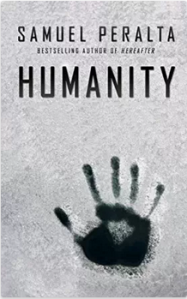 Another of my beliefs is that there are scores of independent authors out there who have amazing voices, but who can’t be heard because they don’t have a chance in the spotlight. What the Chronicles does is give them a chance in that spotlight, to have their names alongside established writers like Hugh Howey, Ken Liu, and Robert J. Sawyer. Once they’re in a book that hits the top levels – in both quality and readership – they know what is possible. They know, as I like to say: The best is yet to come. Instead of giving up, they keep writing, readers find them, and we are all blessed with wonderful stories that may not otherwise have been written.
Another of my beliefs is that there are scores of independent authors out there who have amazing voices, but who can’t be heard because they don’t have a chance in the spotlight. What the Chronicles does is give them a chance in that spotlight, to have their names alongside established writers like Hugh Howey, Ken Liu, and Robert J. Sawyer. Once they’re in a book that hits the top levels – in both quality and readership – they know what is possible. They know, as I like to say: The best is yet to come. Instead of giving up, they keep writing, readers find them, and we are all blessed with wonderful stories that may not otherwise have been written.
What’s validated this vision of a new Silver Age is that readers have embraced the series – all Chronicles titles to date, including those edited by Ellen Campbell, have become the #1 bestselling SF or Fantasy anthology in turn. Three of them have broken through to the Amazon Top 100 bestseller list for all books; The Alien Chronicles went as high as #6, and another, The A.I. Chronicles, got there without any promotion besides its readership.
I’m amazed that I can be part of that kind of phenomenon, part of bringing new and relevant voices to the spotlight. The energy is what keeps me going.
How have you found working with independent authors? Although it’s less so today, there is still a stigma attached to indies. What are your thoughts on the indie revolution? Is it really transforming the publishing industry?
Independent authors are like jazz musicians – they can be incredibly talented in their own right – but they don’t mind jamming with other musicians. In essence, that’s what we’re doing in the Chronicles, putting together concert tours with friends from other bands. I’ve forged some real friendships.
In terms of transforming the publishing industry, I don’t think there’s any question that independent authors are making an impact. The Martian started life as an independently-published novel. It’s only one of a number of independent works that are coming into the mainstream.
You’ve explored robots, telepathy, aliens, AI and dragons. On the horizon, there’s zombies and alternative histories. What else do you have planned for the series?
As you mentioned, The Z Chronicles and Alt.History 101 are coming soon. The latter is the first of a new ALT Chronicles series which will be a different twist on The Future Chronicles.
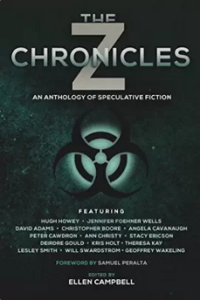 Coming up for the fall are The Time Travel Chronicles and The Cyborg Chronicles, both being edited by Crystal Watanabe; and The Immortality Chronicles, being edited by Carol Davis. I’ve just commissioned a new editor, Jeff Seymour, to helm The Galaxy Chronicles, and there are a number of other titles in the works. We’re planning on releasing a new anthology every 1-2 months, which is a blistering pace for anthologies.
Coming up for the fall are The Time Travel Chronicles and The Cyborg Chronicles, both being edited by Crystal Watanabe; and The Immortality Chronicles, being edited by Carol Davis. I’ve just commissioned a new editor, Jeff Seymour, to helm The Galaxy Chronicles, and there are a number of other titles in the works. We’re planning on releasing a new anthology every 1-2 months, which is a blistering pace for anthologies.
As an independent author that’s appeared in three of the chronicles, I love the way The Future Chronicles provides a showcase of independent writing. It’s fun. It’s a chance to break out of the author hermit shell and collaborate with peers. It’s an opportunity to reach new readers. What success stories have come out of The Future Chronicles?
How do I start? There are so many. I’ve loved the way some of the stories that originated in the Chronicles have spawned new successful series. For example, Susan Kaye Quinn‘s “Restore” in The A.I. Chronicles, was a lead-in to her book The Legacy Human, and her Singularity series. Vincent Trigili‘s ongoing Silverleaf Chronicles was a direct result of his writing “The Storymaster” for The Dragon Chronicles. A.K. Meek‘s “The Invariable Man” was popular enough that he expanded the world and released The Invariable Man: The Novel.
Will Swardstrom, best known for his work based on Hugh Howey’s world of Wool, told me that he got his first true fan mail after his story “Uncle Allen” appeared in The Alien Chronicles. I’ve had readers tell me they’d never read science fiction before – but now they would, after reading one of our titles.
There are new success stories every time we launch a new anthology. We have over 100 contributors to The Future Chronicles series now – authors, artists, editors – and to me, every single one is a Chronicles success story.
What advice do you have for aspiring authors? Given all the writers you have reviewed for The Future Chronicles and all the books you read, what do you think makes a good story? If you had to crystalize a great story into a handful of concepts or guidelines, what would they be?
To be successful, you must read a lot, and write a lot. Read to see what works and what doesn’t. Write so that your craftsmanship gets better, so that you begin to hear your own unique voice. And keep writing. Never forget the editing stage. And when you’re done, read your story aloud to yourself, so you can hear the rhythm, feel the tension, or lack of these, and tighten, tighten, tighten.
A great story has narrative momentum, characters the reader desperately want to succeed or fail, and a resolution that is a closure, a catharsis. It’s an over-simplification, of course, but that’s what I look for. If you must know, I live by Pixar’s Rules of Storytelling. All 22 of them.
Thank you for taking the time to conduct this interview, and for your support of independent science fiction.
Check out The Future Chronicles series on Amazon


May 28, 2015
Book Review: What We Left Behind by Peter Cawdron
Independent book blogger TJ Hapney gives her thoughts on What We Left Behind
 Originally posted on TJ's New Book Blog:
Originally posted on TJ's New Book Blog:
Everyone has a different term for zombies. I call them Zee because that’s the term my mother used before she turned, speaking about the whole horde as though it was just one individual. Grammar has no place in the zombie apocalypse…
Hazel is a regular teenager growing up in an irregular world overrun with zombies. She likes music, perfume, freshly baked muffins, and playing her Xbox—everything that no longer exists in the apocalypse.
Raised in the safety of a commune, Hazel rarely sees Zee anymore, except on those occasions when the soldiers demonstrate the importance of a headshot to the kids.
To her horror, circumstances beyond her control lead her outside the barbed wire fence and into a zombie-infested town.
“Five, Four, Three, Two—count your shots, Haze,” she says to herself, firing at the oncoming zombie horde. “Don’t forget to reload.”
Review 5 of 5 Stars
Those who read…
View original 468 more words


April 27, 2015
Life and death among the stars
The Hubble Space Telescope turns 25 this year, and it has transformed our view of the cosmos, giving us unique insights into the astonishing universe in which we live. I thought it would be interesting to look at the life and death of stars in the context of Hubble’s 25th anniversary.
The pretty pictures we’re most familiar with from Hubble are a treasure trove of information for astronomers.
Hubble has undergone several refit missions while in space, improving its optics. Here’s an example of just how much our view of the stars has increased over the past quarter of a century.

As it is, even with the grainy imaging, this is an astonishing photograph of the aftermath of a supernova that took place 168,000 light years away. To put it in context, “we” (Homo sapiens) were working with crude stone axes somewhere around the horn of Africa, yet to venture out into Europe and Asia, when this star exploded, shining with the radiance of a hundred million suns!
Several hominid species went extinct while the light from this explosion rushed through the void of space to get to us, and just a few decades ago, it finally arrived, revealing the tumultuous death of a star.

Supernova 1987a with improved optics and image processing
Hubble had another look with its upgraded image processing and we got a glimpse of the aftermath of this explosion in stunning detail.
All is not what it seems. Imagine an hour glass. If this star was at the center of the hour glass, then the two, large, faint rings you can see would be either end of the hourglass. Only these rings aren’t the result of the supernova itself, NASA thinks these are “smoke rings” blown off by a blue supergiant some 20,000 thousand years earlier.
While these faint rings are are racing outward at 100,000 mph, the thick inner ring is part of the actual supernova explosion and is racing out at almost ten million miles an hour! The inner ring will overtake the outer ring at some point in the future.
At the heart of the supernova, the stellar remnants have probably collapsed into a neutron star or possibly even a black hole. But the death of one star leads to the birth of others as new chemical elements are formed and flung into space to become the nebulas that will eventually collapse to form another generation of stars and planets.
Hubble has given us a glimpse into how our own solar system formed.

Ignore the blue stars in the foreground of this picture and look at the star cluster of roughly three thousand reddish stars in the heart of the nebula.
Our sun emerged from a stellar nursery just like this, roughly 4.8 billion years ago. These stars are only one or two million years old. They’re babies. The hydrogen they’re comprised of is still to undergo fusion and allow them to ignite as a true star. They formed out of the brilliant nebula visible around them like a cocoon. As they radiate, they’ll send more shockwaves into this gas cloud and cause even more stars to form.
Perhaps one day life will arise around these stars just as it did around our sun, certainly, all the raw materials are there. The only other ingredient needed is time, and the universe has plenty of that as well.
Thank you Hubble.
Thank you NASA.
You have enriched our world with the beauty of the heavens.
If you’re interested in astronomy, be sure to enter into the Cosmos Magazine competition to win a Dobsonian telescope.


April 25, 2015
The lonely bricklayer – A scientific allegory
Scientific research is always important, even if it seems esoteric and unimportant to some. Dr. One Pagan discusses examples in this blog post.
 Originally posted on Baldscientist:
Originally posted on Baldscientist:
The lonely bricklayer – A scientific allegory
More than once people have asked me what good is my research for. This is one of the most common questions that is first and foremost in the mind of the general public. Not surprisingly, it is one of the most difficult questions to answer. This is especially true for fundamental research (as opposed to applied / technological research). After all, if you are working specifically on anticancer medications, not a lot of explanation is needed. The same applies to let’s say, engineering, if you want to build better bridges, for instance.
But, why study…
flowers?
Polar bears?
lichens?
worms?
Etc… This question is a little more difficult to answer, because in a real sense, one does not know the potential usefulness of apparently trivial information. A very readable article with some reasons why fundamental science is valuable can be found here.
View original 727 more words


April 2, 2015
What are the chances of finding life in outer space?
In his book, The Improbability Principle, Professor David Hand makes the point that extremely unlikely events are often quite common.
At first, this sounds like a contradiction, but it’s not, and it has serious implications for SETI, the Search for Extra Terrestrial Intelligence.
We have a difficult time comprehending large numbers and recognizing their implications. For example, the chance of being struck by lightning in any given year is around 1 in 300,000. Not odds you’d normally worry too much about, right?
The chance of being struck by lightning is absurdly low. But when you consider that there are 7+ billion people on the planet it all of a sudden becomes obvious that being killed by lightning is actually quite common. Around 24,000 people are killed every year by lightning, and another ten times that number are seriously injured!
Our ability to intuitively understand probabilities involving numbers in the hundreds of thousands, millions, billions or trillions is poor. We just don’t deal with these numbers in every day life so we have no comprehension of what they mean in practice.
When you consider statistical probabilities, the chance that NO ONE will be killed in the next year by lightning is a stunning 10^-10133 that’s 10 with over ten thousand zeros following it!!
When we consider the possibility of life in outer space, there’s two very important aspects to consider.
First, there is unequivocal evidence for life in outer space. Earth!
Second, knowing life arose at least once, we know life can arise. What we need to do is to determine what the probability of life arising elsewhere actually is. That’s no easy feat, but as science continues to learn more about the origins of life on Earth, the picture will become clearer.
There have been a number of attempts at quantifying the probability of life arising elsewhere in the universe, most notably, the Drake Equation, but recently an alternative has been suggested called the Seager Equation that seeks to narrow the focus from the generalized question “What’s the chance of life arising ANYWHERE?” to a very pointed and specific “Based on what we know, what are the chances we will be able to find life elsewhere in the next decade by detecting biosignature gases?”
Where:
N is the number of planets with detectable biosignature gases
N* is the number of stars within the sample
FQ is the fraction of quiet stars
FHZ is the fraction with rocky planets in the habitable zone
FO is the fraction of observable systems
FL is the fraction with life
FS is the fraction with detectable spectroscopic signatures
If we inject realistic figures based on our current scientific understanding and the ability of a new generation of satellite telescopes like the James Webb to search for exoplanets, this is what we get…
Two.
That’s two planets with signs of life!!!
Now, some might question the assumptions in this equation, pointing out that FL (Fraction with Life) is high being arbitrarily set at one, and they’d be right. But there are other factors that are deliberately understated. The sample size is 30,000 stars. The James Webb Space Telescope is capable of scanning 500,000 stars in the immediate neighborhood, each with potentially dozens of planets, not just a paltry 30,000.
What probability do you want to assign? At this point, we really have no way of really knowing what some of these values are, but we do know that there are at least 70 billion trillion (7 x 10^22) stars in the known universe. Other estimates are several orders of magnitude higher again, at an octillion or 10^29
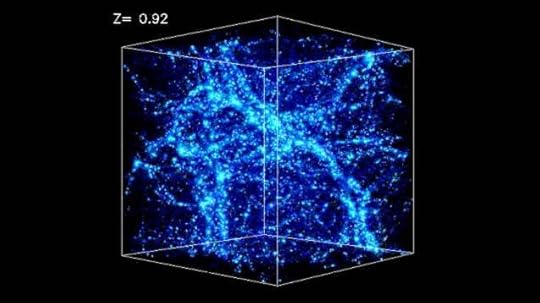
Picture credit. Sloan Digital Sky Survey map of the known universe. At this scale, no stars are visible. Individual galaxies like the Milky Way are also invisible. Only clusters of galaxies, super clusters and filaments containing millions of galaxies can be seen.
Remember our lightning example. Even highly improbable events can be common place given big enough numbers. If the chances of life arising around a given star are stupendously small, at one in a trillion or 10^11, there would still be trillions upon trillions of planets with life in our universe.
Interestingly, though, if the odds were that low, then the chances of life arising in our galaxy are less than one as there’s less than a trillion stars in the Milky Way, which could explain why we haven’t found anything. But for the odds to be that low, there would have to be something “wrong” with the majority of galaxies (as the majority of galaxies have less than a trillion stars). Point being, even if we take a worst case scenario, it seems highly unlikely we are entirely alone. The odds are against it.
Personally, I think the search is only just beginning. We’ve looked at so little of the universe, it’s no surprise we haven’t found life elsewhere. In the words of Neil deGrasse Tyson, “Life doesn’t exist anywhere but Earth? That’s like filling a cup with ocean water and saying there aren’t any whales.”








